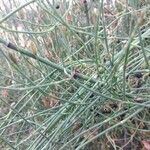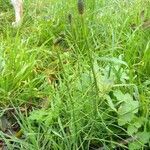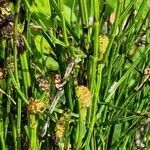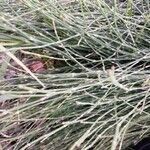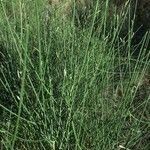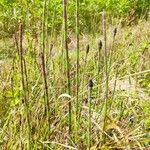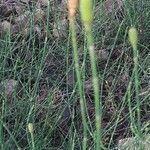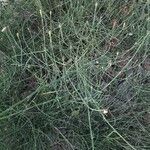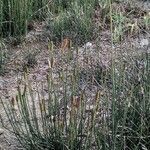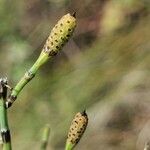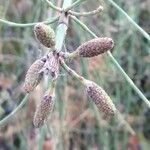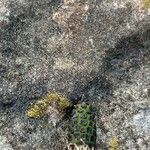Plants terrestrial. Rhizome subterranean, jointed, 3-6 mm in diameter, roots borne in whorls at the nodes. Stems erect, to 1.5 m tall, to 5 mm in diameter, branches borne in whorls at the nodes, up to 14 in each whorl, to 130 mm long, to 1.5 mm in diameter, main stem and branches ridged, bearing silicaceous tubercules or bands, with regular rows of paracytic sunken stomata in the sulci, in cross section with a prominent central canal and small vallecular (under sinuses) and carinal (under ridges) canals. Leaves membranous to thinly chartaceous, each with a single central vein, whorled, fused into a nodal sheath, to 11 mm long, ending in acuminate teeth, to 2 mm long, turning black with age, margins hyaline, estomate. Sporangia elongate, thin-walled, dehiscing longitudinally, borne on stalked, peltate sporangiophores forming a strobilus terminally on a main stem or branch, to 18 mm long, to 5 mm in diameter, each sporangiophore bears 6-9 sporangia. Spores spheroidal, chlorophyllose, with 4 spathulate hygroscopic elaters.
Rhizome creeping, subterranean, jointed, 3-6 mm in diam. Stems erect, jointed, up to 1.5 m tall, up to 5 mm in diam., branches borne in whorls at nodes, up to 14 in each whorl, up to 130 mm long, up to 1.5 mm in diam., main stems and branches fluted. Leaves membranous to thinly chartaceous, each with a single central vein, whorled, fused into a nodal sheath, up to 1 mm long, ending in acuminate teeth up to 2 mm long, turning black with age. Sporangia elongate, thin-walled, dehiscing longitudinally, borne on stalked, peltate sporangiophores forming a strobilus terminally on a main stem or branches, up to 18 mm long, up to 5 mm in diam.
Subterranean stems horizontal to erect, black, up to 8 mm in diameter, bearing roots. Aerial stems up to 2 m high with primary axis erect, conspicuously longitudinally ribbed, up to 5 mm in diameter with whorls of up to 14 scale leaves up to 11 mm long, fused for most of their length, ending in free acuminate teeth up to 2 mm long, often turning black with age, apical portions frequently broken off. Branches produced at nodes, up to 14 in each whorl, up to 130 x 1-1.5 mm. Strobili up to 23 x 8 mm, with a blunt conical apex; sporangiophores 1-1.5 mm in diameter.
Subterranean stems black, up to 3 mm. in diam., horizontal to erect, bearing roots and aerial stems up to 2 m. high with primary axis erect up to 5 mm. in diam., conspicuously longitudinally ribbed, with whorls of up to 14 scale leaves up to 1.1 cm. long, fused for most of their length, ending in free acuminate teeth up to 2 mm. long, often turning black with age, the apical portions frequently broken off.
Subterranean stems horizontal to erect, black, bearing roots. Aerial stems up to 2 m high, conspicuously ribbed. Leaves reduced to a many-toothed, short sheath. Sporangiophores in compact strobili, terminal on stems, sporangia numerous.
Perennial with branched underground rhizome. Aerial stems erect, hollow, ribbed, branches borne in whorls at nodes, leaves fused, forming a reduced papery whorl at each node. Strobili terminal on branches.
Perennial with underground rhizome. Aerial stems erect and hollow forming distinct internodes, ribbed, leaves reduced to a short, papery sheath of fused teeth at each node. Strobili terminal on branches.
Branches produced at the nodes up to 14 in each whorl, up to 13 cm. long, c. 1–1.5 mm. in diam.
Cones up to 1.8 x 0.5 cm., with a blunt conical apex; sporangiophores 1–1.5 mm. in diam.
Subspecies 2 (1 in the flora): North America, Europe, Asia, Africa, Pacific Islands.
A herb. It has underground rhizomes.
